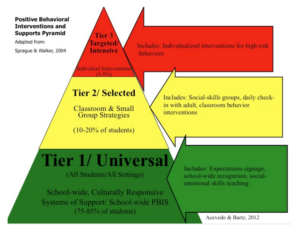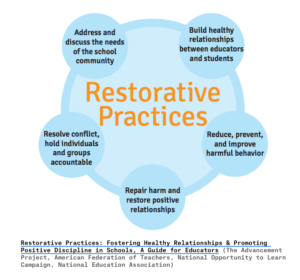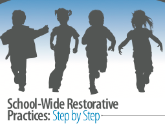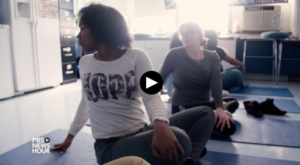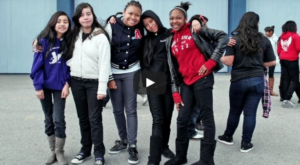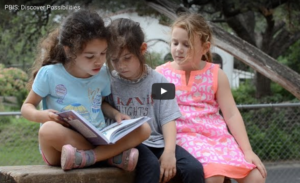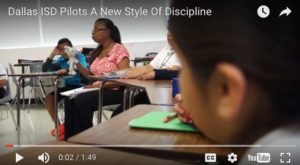Years of research and data collection have shown that disciplinary removals from class and contact with school police and courts harm students. Fortunately, there is also research around a number of positive interventions that improve student behavior, assist teachers with classroom management, and create a more supportive classroom environment. Check out the resources below and to the right to learn more about these interventions.
Please let us know if other research-based methods work in your school!
Social and Emotional Learning
Social and Emotional Learning (SEL) focuses on building children’s social and emotional coping strategies. Students learn five core competencies: self awareness, self management, social awareness, relationship skills, and responsible decision making (displayed on the graphic below from the Collaborative for Academic, Social and Emotional Learning). The SEL skills are also reinforced in classrooms with posters, displays of classroom expectations, areas for peer mediation, and displays of classroom rules. SEL emphasizes the emotional and social skill development of the students, and it places the focus on self-awareness and social awareness.
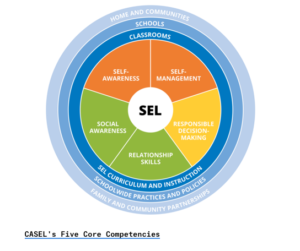
Positive Behavioral Interventions and Supports
Positive Behavioral Intervention and Supports (PBIS) is an alternative to school removals that uses a tiered system of prevention and intervention strategies and places a strong focus on positive reinforcement of good behaviors and teaching behavioral expectations. Tier 1 interventions are used with the entire student body. Tiers 2 and 3 focus on smaller groups and individual students who need additional services and supports. With PBIS, teachers are trained in methods and strategies that help in managing student behavior and emotional disturbances. PBIS emphasizes management and discipline, and focuses on the prevention of escalation and aggression in academic settings.
Restorative Justice
Restorative Justice is a prevention-oriented alternative to school removals that fosters peer accountability and relationship building. This method consists of utilizing peer mediation and reaching agreements between students and teachers to uncover the root of disruptive or harmful behavior. In this way, restorative justice accounts for the individual circumstances that may cause students to misbehave, rather than immediately dispensing punishment for student misbehavior. For instance, a student who does not have reliable access to food at home may try to take another student’s food or act out while at school. Rather than directly punishing the child for taking food or acting out, educators and administrators can use restorative justice methods to uncover and respond to the student’s personal circumstances.
Using restorative justice, students will have the chance to seek understanding from the affected parties, and educators will be able to address the root cause of the misbehavior. Furthermore, this method of school discipline creates an environment of cooperation among students, educators, and administrators by creating a space for constructive discussions where everyone has a chance to share their perspective regarding a behavioral incident. Restorative Justice functions on the belief that positive relationships are at the heart of productive and healthy educational environments.



